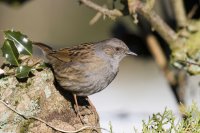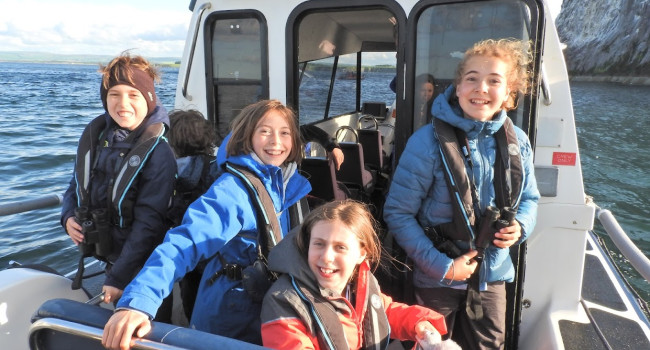What's happening to Buckinghamshire's Dunnocks?
01 Apr 2015 | No. 2015-13
Due to the breeding population decline of Dunnocks in the UK over the past 45 years, this ‘common garden visitor’ has been given an amber conservation status. However, British Trust for Ornithology (BTO) Garden BirdWatch data show that they are thriving in Buckinghamshire’s gardens and we need your help to find out why.
The Dunnock is a species that has been of recent concern due to its decline in the UK. In fact, numbers have fallen by 30% in the last 45 years. It is believed that this decline is due to cold winter weather. Dunnocks are known to suffer during spells of prolonged freezing conditions and snowfall which limits their access to food. However if constant snowfall drops from the skies above, Dunnocks, and other birds, come into gardens in search of bird feeders and shelter from the rough weather around them. This could be why there was a decline in the number of gardens reporting Dunnocks in Buckinghamshire in 2012 and 2013, with nearly a 30% decrease in reports of Dunnocks in winter 2013 compared to 2011 and 2014.
This year, however, Dunnocks have been thriving in Buckinghamshire’s gardens. This could be due to the relatively mild winter that we have just experienced giving Dunnocks more opportunity to find food, like insects, to see them through the winter.
Clare Simm, of the BTO Garden BirdWatch team, commented, "We can only chart the patterns of movements of birds in and out of gardens thanks to members of the public. By submitting weekly observations Garden BirdWatch participants help us build up an image of what is going on and, on occasion, whether there are any strange patterns that need exploring. If you enjoy watching the birds in your garden, you can help add to this vital information."
Will Dunnocks continue to do well in Buckinghamshire gardens, or will they go the way of those in the wider countryside? Help us find out.
For a free BTO Garden BirdWatch information pack, which includes a copy of our quarterly magazine, please contact gbw [at] bto.org, telephone 01842 750050, write to Garden BirdWatch, BTO, The Nunnery, Thetford, Norfolk, IP24 2PU or visit www.bto.org/gbw.
Notes for Editors
- The BTO Garden BirdWatch is the only nationwide survey of garden birds to run weekly throughout the year, providing important information on how birds use gardens, and how this use changes over time. Currently, some 13,000 people take part in the project. The project is funded by participants’ contributions and is the largest year-round survey of garden birds in the world. For more information see www.bto.org/gbw.
- The BTO is the UK's leading bird research charity. A growing membership and up to 60,000 volunteer birdwatchers contribute to the BTO's surveys, collecting information that underpins conservation action in the UK. The BTO maintains a staff of 100 at its offices in Thetford, Stirling, Bangor (Wales) and Bangor (Northern Ireland), who analyse and publicise the results of surveys and projects. The BTO's work is funded by BTO supporters, government, trusts, industry and conservation organisations.www.bto.org
Contact Details
Clare Simm
(BTO Garden BirdWatch Development Officer)
Office: 01842 750050
(9am to 5.30pm)
Email: clare.simm [at] bto.org
Mike Toms
(BTO Associate Director Communications - Science)
Office: 01842 750050
(9am to 5.30pm)
Email: mike.toms [at] bto.org
Images are available for use alongside this News Release.
Please contact images [at] bto.org quoting reference 2015-13
The BTO has an ISDN line available for radio interviews.
Please contact us to book an interview
Office: 01842 750050







Share this page